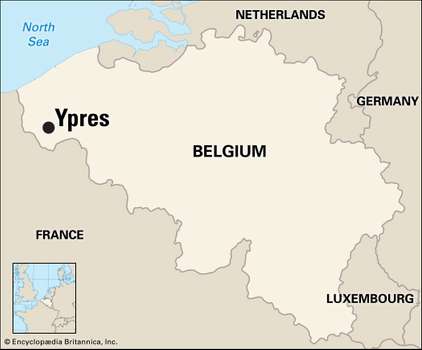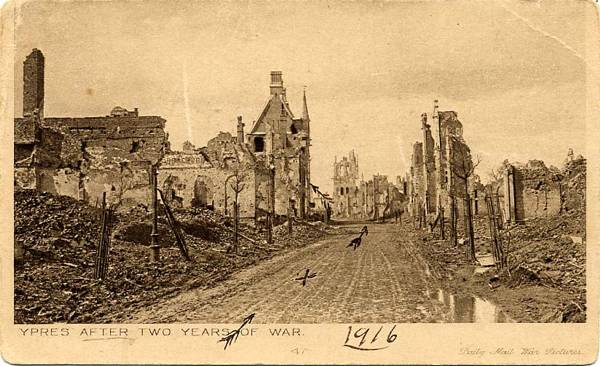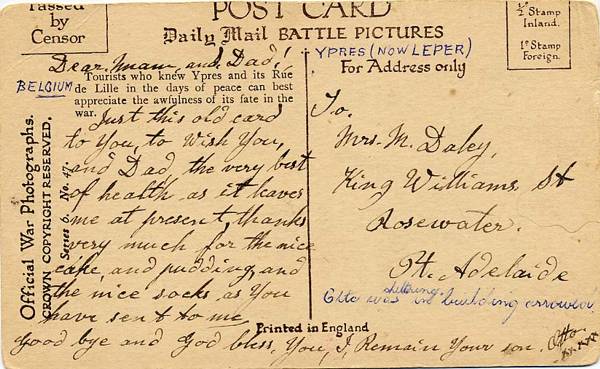Anzac Day: A Message from the Battlefield
For Anzac Day this year I’m focussing on Ypres, a city in Belgium that’s on the French border. A prosperous place that in 1914 had a population of around 18,000 people.
Just for reference, Ypres is the Belgian version of the name, while the Australian Diggers knew it as as “Wipers”. And nowadays it is often known by it’s Dutch version, “Ieper”, which is pronounced as “ee-per”.
From November 1914 through until November 1917 Ypres was devastated by war and as you would expect, deserted by its inhabitants. Over that 4 year period, there were over 38,000 Australians who were killed or wounded in the Ypres battles, while the total number of casualties for all sides climbed into the many hundreds of thousands.
Captain Frank Hurley was an Australian official military photographer who was in Ypres during 1918 and captured many unforgettable images of the destruction and the lives of the Australian soldiers during the Third Battle of Ypres (also known as the Battle of Passchendaele). The photograph at the top of this post is one of his very well-known ones. The State Library of New South Wales has a large collection of his war photographs (and diaries) online, so if you’re interested feel free to click here to view them.
Anyway this year I’m remembering my great grandpa, Otto Rafael Winter. I have written about him before, including his service with the Australian military, but this time I’m highlighting a family heirloom.
The postcard pictured below is one of the very few heirlooms that exist from my Winter family, and it’s a postcard that Otto sent from Ypres, Belgium (one of the places he was deployed to) to his parents-in-law, John and Margaret Daley, in South Australia.
The postcard itself is a photograph of what the city of Ypres looked like after two years of war: bombed out buildings and crumbling ruins. But on it he’s drawn little arrows, with a notation on the back written by his daughter saying “Otto was sheltering in building arrowed”. He’s also written a date of 1916 on it, but I’m unsure of when the postcard was actually sent.
A transcript of the what he wrote is as follows:
Dear Mam, and Dad!
Just this old card to you, to wish you and Dad the very best of health as it leaves me at present, thanks very much for the nice cake, and pudding, and the nice socks as you have sent to me.
Good bye and God bless you,
I remain you son, Otto xxxxx
—————————–
To me it’s not ‘just’ a postcard. It’s a tiny picture into what his life was like during the war, and what he saw. It also a little memento that shows me how much he cared for his parents-in-law. Firstly taking the time to write to them. Thanking them for the parcels of cake, pudding and socks that they’d sent. Calling them mam and dad. And signing off as “I remain your son”. That shows he cared, right?
Otto was a merchant seaman from Finland who jumped ship in Australia, and made it his home, so much so, that in 1909 he chose to become an Australian citizen and was naturalised.
He met a local girl, Irene Daley. Married her in June 1915 and their first child was born a few months later.
With the war dragging on much longer than it was expected, the call for more volunteers came and Otto signed up in January 1916, and by May 1916 he was in Belgium. A tunneller, he was in Ypres in March 1918 when he was poisoned in a mustard gas attack and was sent to an Australian military hospital in France to recover.
Otto was lucky. Not only did he survive the mustard gas, but also the rest of the war despite other injuries. In June 1919 he made it home to his wife and family, and lived on until he was 81.
Lest We Forget!








That’s something very precious to have. I’m told that my grandfather’s parcels were stolen…I don’t even have his photo in uniform though I do have his medals. The latest Nathan Dylan Goodwin book features Ypres…you’ll find it interesting.
A treasure to have, beautiful clear handwriting too.
I visited Ieper (the Belgian spelling) and the surrounding battlefields (Broodseinde, Messines, Polygon Wood etc) in September last year. Ieper is a very interesting and well restored city.
The postcard is a wonderful artefact to have. It would be great to upload this and any other information you have to Otto Winter’ profile on the Virtual War Memorial http://www.vwma.org.au.
I note that Otto also served in the home volunteer defence corps during WWII.